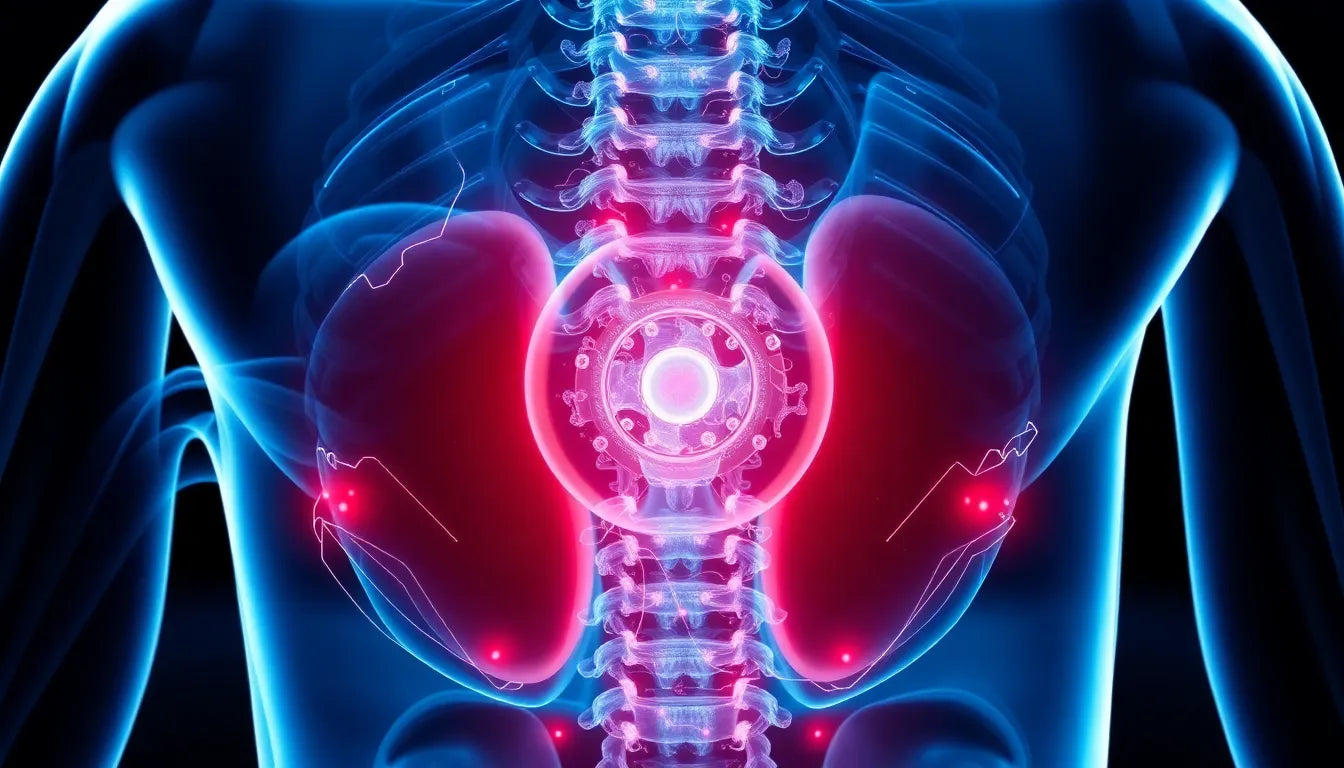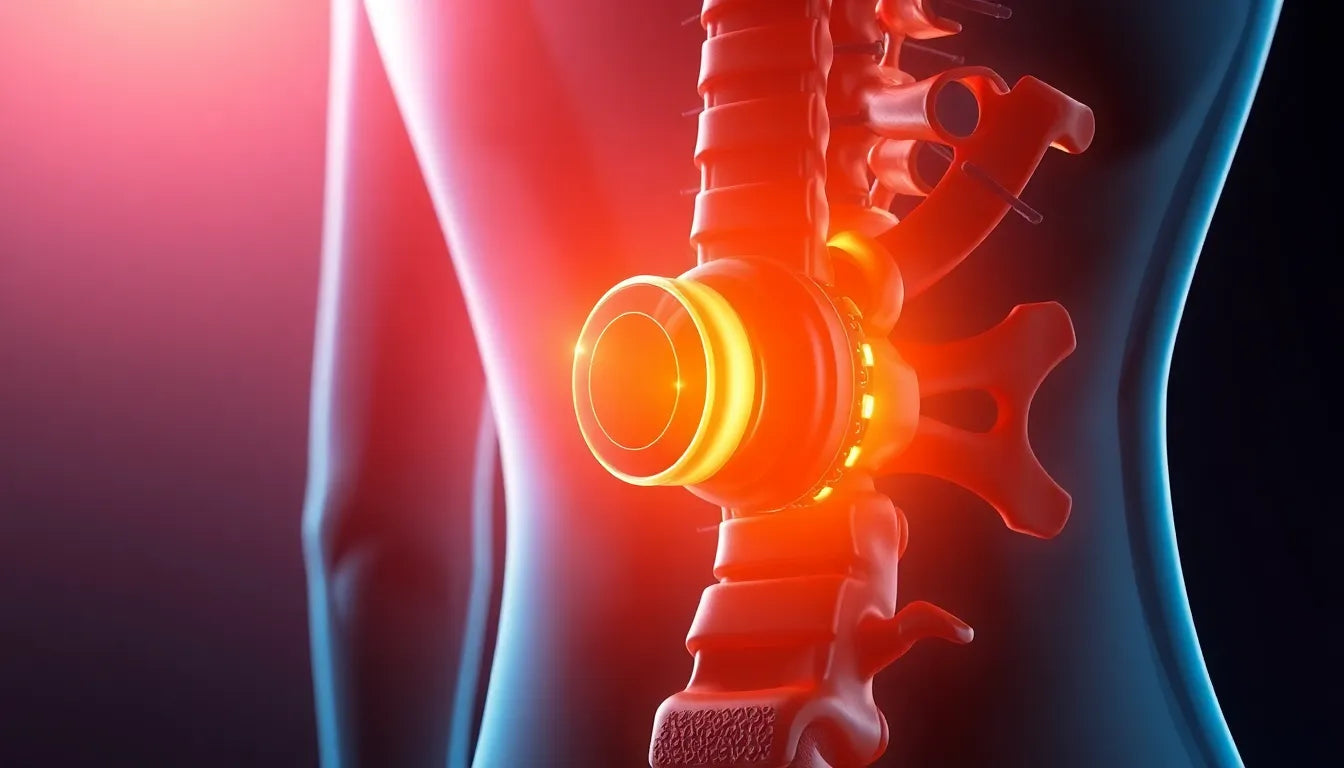A herniated disc, often referred to as a slipped or ruptured disc, is a common condition that can cause significant discomfort and impact daily life. This condition occurs when the soft center of a spinal disc pushes through a crack in the tougher exterior casing. While some herniated discs may not present symptoms, others can lead to back pain, numbness, tingling, and weakness in the limbs, depending on the location of the herniation.
Herniated discs are prevalent, especially among adults aged 30 to 50, and can significantly affect mobility and quality of life. Everyday activities, such as bending, lifting, or even sitting, can become challenging. The discomfort and limitations imposed by a herniated disc make finding effective relief solutions crucial for maintaining an active and fulfilling lifestyle.
exploring the path to relief
Fortunately, a variety of treatment options are available to address herniated disc symptoms. These range from conservative, non-surgical methods to surgical interventions, each tailored to the individual's specific needs and the severity of their symptoms. The path to relief often begins with a personalized approach, considering both the patient's lifestyle and the extent of their condition.
Conservative treatments are typically the first line of defense against herniated disc symptoms. These may include rest, physical therapy, medication, and lifestyle modifications aimed at reducing pain and inflammation. For those whose symptoms persist despite these measures, surgical options may be considered. Procedures such as microdiscectomy, disc replacement surgery, and lumbar laminectomy can provide significant relief and restore function.
Understanding the variety of available treatments and the importance of a personalized treatment plan is essential for those suffering from a herniated disc. By exploring both conservative and surgical options, individuals can find the most effective path to relief, improving their quality of life and regaining mobility.
conservative treatments for herniated disc relief
When dealing with a herniated disc, conservative treatments are often the first line of defense. These non-surgical methods focus on alleviating pain and promoting healing without the need for invasive procedures. One of the simplest yet most effective strategies is rest and activity modification. Allowing the body time to heal by avoiding activities that exacerbate symptoms can significantly reduce discomfort. However, complete bed rest is not recommended as it may lead to muscle weakening and stiffness.
Physical therapy plays a crucial role in recovery by focusing on exercises that strengthen the core and improve flexibility. A well-designed physical therapy program can help stabilize the spine and reduce pressure on the herniated disc. Techniques such as stretching, strengthening exercises, and low-impact aerobic activities are commonly used to enhance mobility and reduce pain.
Medication is another cornerstone of conservative treatment. Nonsteroidal anti-inflammatory drugs (NSAIDs) are often prescribed to manage pain and reduce inflammation. In cases where muscle spasms are present, muscle relaxants may be recommended. Additionally, corticosteroids can be administered orally or through epidural injections to provide more direct relief from inflammation around the affected nerves.
Hot and cold therapy is a simple yet effective method for managing herniated disc symptoms. Applying heat can help relax tight muscles and improve blood flow, while cold therapy can reduce inflammation and numb sharp pain. Alternating between hot and cold packs can provide comprehensive relief and is an accessible treatment option for many patients.
For some individuals, epidural steroid injections may be considered. This procedure involves injecting a corticosteroid directly into the epidural space around the spinal nerves, aiming to reduce inflammation and alleviate pain. While not a permanent solution, these injections can provide significant relief and allow patients to engage more actively in physical therapy.
Maintaining a healthy weight is also vital in managing a herniated disc. Excess weight can place additional stress on the spine, exacerbating symptoms. A balanced diet and regular exercise can aid in weight management, contributing to overall spinal health and reducing the likelihood of further disc issues.
surgical interventions for herniated disc
While conservative treatments are effective for many, some patients may require surgical intervention to achieve relief from a herniated disc. Surgery is typically considered when non-surgical methods fail to alleviate symptoms after several weeks or if there is significant nerve compression causing severe pain or weakness.
One of the most common surgical procedures for herniated disc relief is microdiscectomy. This minimally invasive procedure involves removing the portion of the disc that is pressing on the nerve. With a success rate of approximately 90%, microdiscectomy is highly effective in relieving pain and restoring function.
Disc replacement surgery is another option, particularly for patients who may benefit from preserving motion in the spine. This procedure involves removing the damaged disc and replacing it with an artificial one. It is often considered when other surgical options are not suitable, and it can provide long-term relief while maintaining spinal flexibility.
For cases where there is significant pressure on the spinal cord or nerves, a lumbar laminectomy may be performed. This surgery involves removing a portion of the vertebra to create more space for the nerves, effectively reducing compression and pain.
understanding treatment timelines
The recovery timeline for herniated disc treatments varies depending on the approach taken. Conservative treatments often show improvement within 4-6 weeks, with many patients experiencing significant relief. For those undergoing surgery, recovery times can differ based on the procedure. After a microdiscectomy, patients typically resume light activities within 1-2 weeks and achieve full recovery around six weeks post-surgery.
Ultimately, the choice between conservative and surgical treatments depends on individual circumstances, including the severity of symptoms and the patient's overall health. By understanding the available options and their respective timelines, patients can make informed decisions about their path to relief and recovery.
Patient-centered strategies for managing herniated disc pain
Living with a herniated disc can be challenging, but incorporating patient-centered strategies into daily life can significantly improve comfort and functionality. One key aspect is the use of ergonomic solutions and lifestyle adjustments. Ergonomic aids, such as supportive chairs and adjustable desks, can help maintain proper posture and reduce strain on the spine. These tools are particularly beneficial for individuals who spend extended periods sitting or working at a desk.
In addition to ergonomic aids, making simple lifestyle changes can be highly effective. Regular exercise, focusing on low-impact activities like swimming or walking, helps maintain spinal health and prevent further injury. Incorporating stretching routines into daily activities can enhance flexibility and reduce tension in the back muscles, contributing to overall pain management.
Workplace accommodations for herniated disc relief
For those managing a herniated disc, creating a supportive work environment is crucial. Setting up an ergonomic workstation can help prevent the exacerbation of symptoms. This includes adjusting the chair and desk height to ensure that the computer screen is at eye level, feet are flat on the floor, and elbows are at a 90-degree angle when typing. Using a lumbar support cushion can further assist in maintaining the natural curve of the spine, alleviating pressure on the lower back.
Taking regular breaks to stand, stretch, and walk around is also essential. These breaks reduce the risk of stiffness and muscle fatigue, promoting better circulation and reducing discomfort. Employers can support employees by providing ergonomic assessments and flexible work arrangements, ensuring that individuals with herniated discs can perform their duties comfortably and efficiently.
Preventing herniated disc recurrence
After recovering from a herniated disc, prevention of recurrence becomes a priority. Engaging in regular physical activity, focusing on exercises that strengthen the core muscles, can provide essential support to the spine. Proper lifting techniques, such as bending at the knees and keeping the back straight, are crucial to avoid placing undue stress on the discs.
Maintaining a healthy weight is another important factor in preventing recurrence. Excess weight can increase the load on the spine, making it more susceptible to injury. A balanced diet and regular exercise routine can help manage weight effectively, contributing to overall spinal health.
Frequently Asked Questions
What are the first steps if I suspect a herniated disc?
If you suspect a herniated disc, it is important to consult with a healthcare professional for a proper diagnosis and personalized treatment plan. Early intervention can prevent further complications and help you manage symptoms effectively.
How effective are non-surgical treatments for a herniated disc?
Non-surgical treatments are often highly effective for many patients, with significant symptom relief typically occurring within 4-6 weeks. These treatments include rest, physical therapy, medication, and lifestyle adjustments.
When is surgery necessary for a herniated disc?
Surgery is generally considered when conservative treatments fail to alleviate symptoms after several weeks or if there is significant nerve compression causing severe pain or weakness. A healthcare professional can help determine the best course of action based on individual circumstances.
What lifestyle changes can help manage a herniated disc?
Incorporating regular exercise, maintaining a healthy weight, and using ergonomic aids can significantly help manage herniated disc symptoms and prevent recurrence. These lifestyle changes support spinal health and reduce the risk of further injury.
Can a herniated disc heal on its own?
Many herniated discs improve over time with conservative treatment. However, some cases may require surgical intervention for complete relief. It is essential to follow a healthcare professional's guidance to determine the most appropriate treatment plan.
Sources
- Mayo Clinic. "Herniated disk - Diagnosis and treatment." Mayo Clinic.
- Cleveland Clinic. "Herniated Disk (Slipped or Bulging Disk)." Cleveland Clinic.
- Sciatica.com. "11 Treatment Options for Herniated Discs." Sciatica.com.
- WebMD. "Herniated Disk Treatment, Remedies, and Medications." WebMD.
- Cuellar Spine. "Herniated Disc Treatment Options in Palm Beach County." Cuellar Spine.
- Northeast Spine and Sports. "What Is the Best Treatment for a Herniated Disc?" Northeast Spine and Sports.
- NYU Langone Health. "Nonsurgical Treatments for Herniated Disc." NYU Langone Health.


















